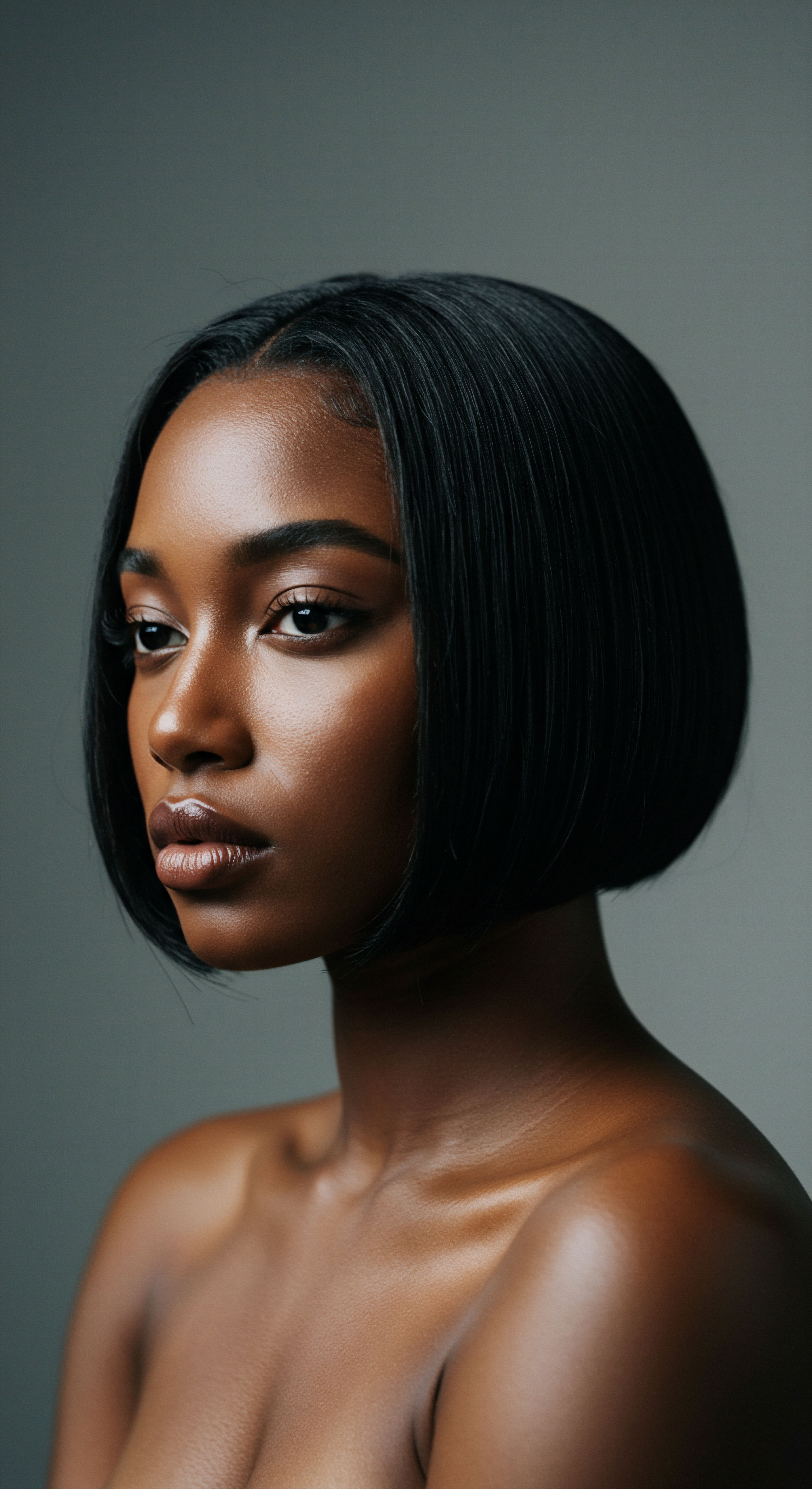
Roots
The quiet hours of slumber, a time when the world softens its edges and we surrender to rest, might seem far removed from the concerns of hair. Yet, across countless cultures and through the deep echoes of history, a profound understanding has persisted ❉ hair, particularly textured hair, requires diligent care, even as we sleep. This awareness, far from a modern discovery, has guided generations in crafting ingenious solutions to protect strands from the unseen perils of night. It is a testament to an ancient wisdom, a gentle recognition that the health and vitality of our hair extend beyond waking hours, rooted in the very fabric of daily life and nighttime repose.

An Ancient Understanding of Hair’s Vulnerability
From the earliest civilizations, humanity recognized the delicate nature of hair. Unlike skin, which regenerates, hair is a non-living fiber, susceptible to mechanical stress, moisture loss, and environmental aggressors. During sleep, the unconscious movements of the head against various surfaces, often coarse, could lead to friction, tangles, and breakage.
This basic physical reality prompted communities worldwide to develop artifacts and practices designed to shield hair from such nightly wear. These cultural responses were not merely aesthetic; they were practical acts of preservation, born from a deep respect for hair’s inherent qualities and its cultural significance.
Ancient wisdom across diverse cultures recognized hair’s delicate nature, leading to the creation of protective artifacts for sleep.
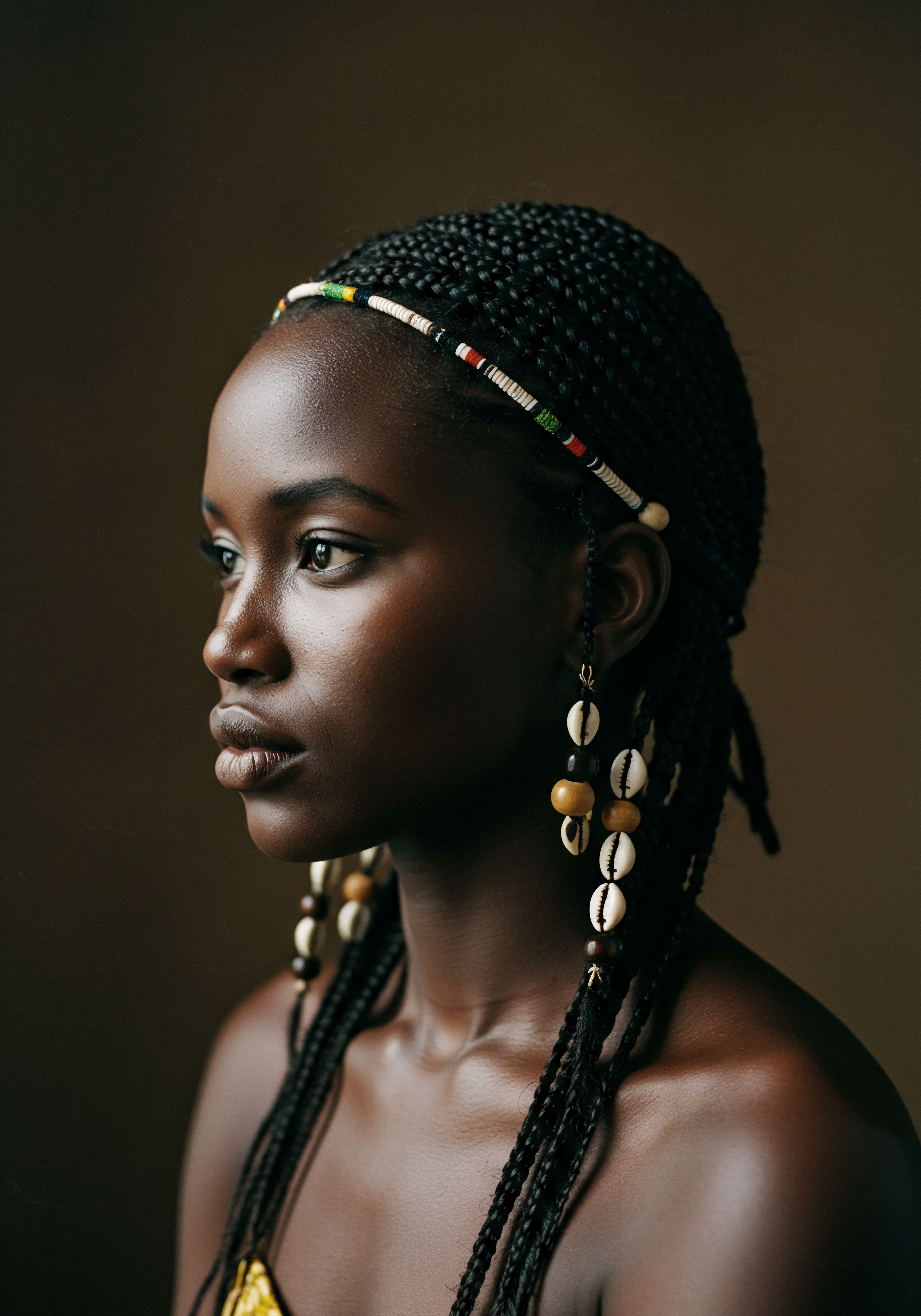
The Genesis of Sleep Protection for Hair
The earliest forms of hair protection during sleep likely involved simple coverings. Consider the raw materials available to early societies ❉ animal skins, woven plant fibers, or perhaps even large leaves. As human ingenuity advanced, so too did the sophistication of these protective measures.
The desire to maintain intricate hairstyles, to prevent tangling, or simply to preserve warmth for the scalp, all contributed to the development of specific artifacts. These were not luxury items for many; they were essential tools for daily living, ensuring that hair remained manageable and healthy for the day ahead.
- Headwraps ❉ Simple yet versatile, these have been used across various African cultures for centuries. They served to protect hair from dust, sun, and other elements during the day, and were often adapted for nighttime use to preserve hairstyles and moisture.
- Bonnets ❉ While often associated with European fashion from the Middle Ages onwards, their protective function for hair during sleep is well-documented. Early bonnets, sometimes called “sleep caps,” were worn to keep hair tidy and prevent tangles.
- Silk Scarves ❉ Tracing their origins back to ancient China, silk has been revered for its smooth texture. Its use in hair care, including for sleep protection, is recorded across East Asian, South Asian, and Middle Eastern cultures, prized for reducing friction.

Why Protect Hair While Sleeping?
The rationale behind protecting hair during sleep spans several practical considerations. Foremost among these is the reduction of friction. When hair rubs against coarse fabrics like cotton pillowcases, the cuticle layer, which is the outermost protective shield of the hair shaft, can lift and become damaged. This leads to frizz, breakage, and dullness.
Additionally, coverings helped retain the hair’s natural oils and applied moisture, preventing dryness, a common concern for textured hair types that are naturally more prone to dehydration. The preservation of elaborate daytime hairstyles also played a significant role, saving time and effort in morning preparations.
For cultures where hair held deep spiritual or social meaning, its physical preservation took on added weight. Damaged or unkempt hair could reflect poorly on an individual or even a community. Thus, the act of protecting hair during sleep became a small but meaningful ritual, a quiet affirmation of self-care and cultural continuity.
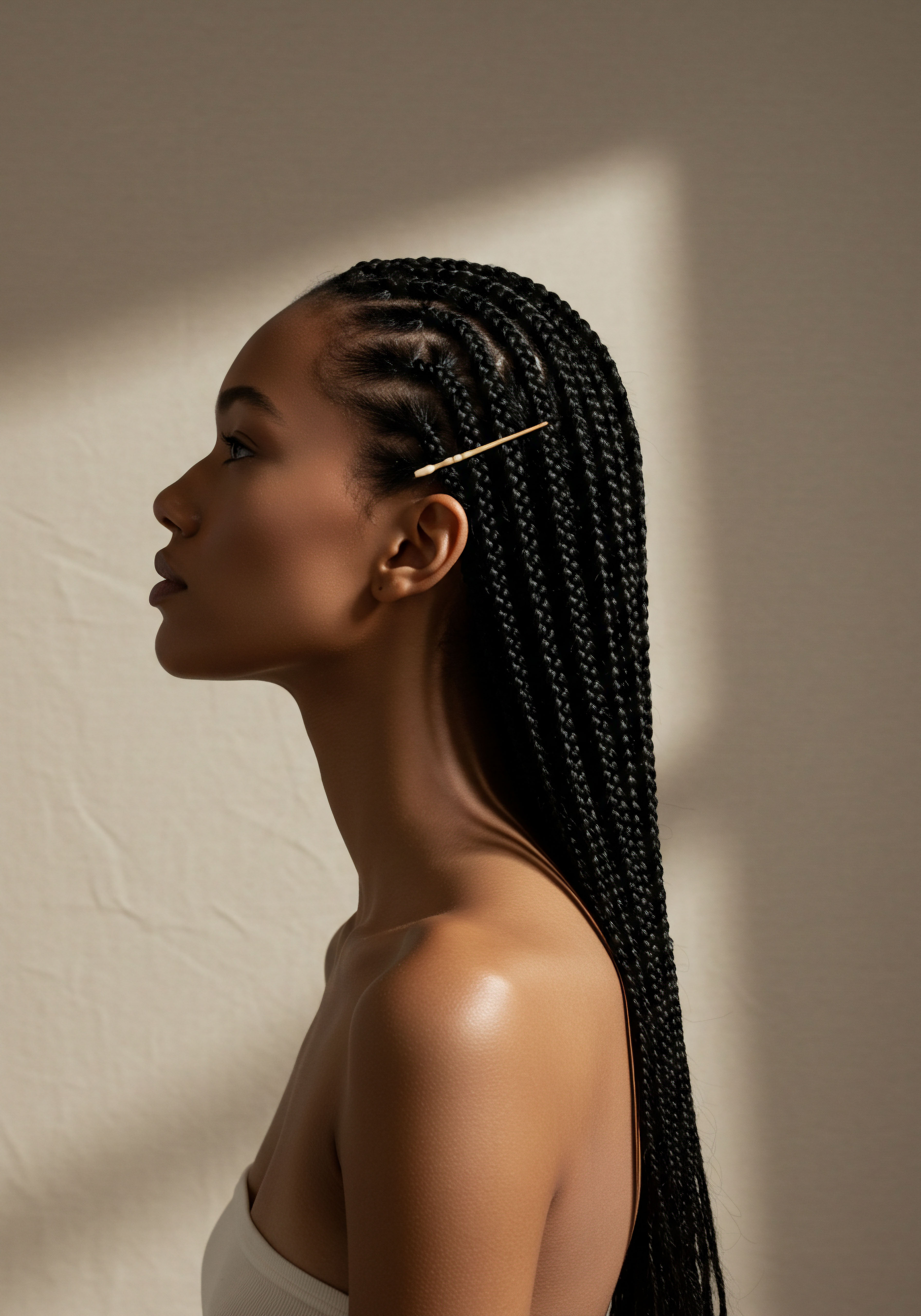
Ritual
As the sun dips below the horizon, a different kind of preparation begins, one steeped in the quiet rhythms of personal care. For those who understand the delicate balance of healthy hair, the transition from day to night is not a cessation of care, but a shift in its expression. We seek practical wisdom, methods passed down through generations, to ensure our strands remain vibrant, resilient. The artifacts themselves hold stories, silent testaments to collective knowledge, each a tool within a larger, meaningful nightly practice.

The Nighttime Sanctuary and Its Guardians
The space of sleep transforms into a sanctuary for hair, guarded by specific cultural artifacts. These items, far from mere accessories, serve as a physical barrier against the rigors of nightly movement. Their design and material selection reflect centuries of empirical observation and a deep understanding of hair’s needs.
The choice of material, often silk or satin, speaks to a recognition of their low-friction properties, which allow hair to glide rather than snag. This gentle interaction is paramount, especially for textured hair, which is inherently more susceptible to mechanical damage.

What Materials Offer the Best Nighttime Hair Protection?
The selection of materials for sleep protection is a cornerstone of effective hair care. Historically, and in modern times, certain textiles have been favored for their ability to minimize friction and preserve hair’s moisture.
- Silk ❉ Revered for millennia, silk’s smooth surface creates minimal friction against hair strands. This reduces tangling, breakage, and the lifting of the hair’s cuticle. Its natural protein structure also helps to maintain hair’s moisture balance, preventing excessive dryness.
- Satin ❉ While often confused with silk, satin refers to a type of weave that produces a glossy surface, regardless of the fiber. Satin made from polyester or other synthetic fibers can offer similar low-friction benefits to silk, making it a more accessible alternative for hair protection.
- Cotton (with Caveats) ❉ Traditional cotton pillowcases, while common, can be detrimental to hair due to their absorbent and relatively coarse fibers. They draw moisture from the hair and create friction, leading to frizz and breakage. However, certain cultural headwraps made from cotton were used, often layered or in conjunction with oiling practices, to offer some protection, though less ideal than silk or satin.
| Material Silk |
| Key Benefit for Hair Reduces friction, retains moisture, minimizes frizz and breakage. |
| Cultural Presence Ancient China, India, Middle East, Japan, African diaspora. |
| Material Satin (Synthetic) |
| Key Benefit for Hair Reduces friction, good for maintaining style. |
| Cultural Presence Modern use, particularly within Black hair care communities. |
| Material Fine Linen |
| Key Benefit for Hair Breathable, offers some protection against tangles. |
| Cultural Presence Ancient Egypt (for head coverings). |
| Material The choice of sleep fabric significantly impacts hair health and style preservation. |
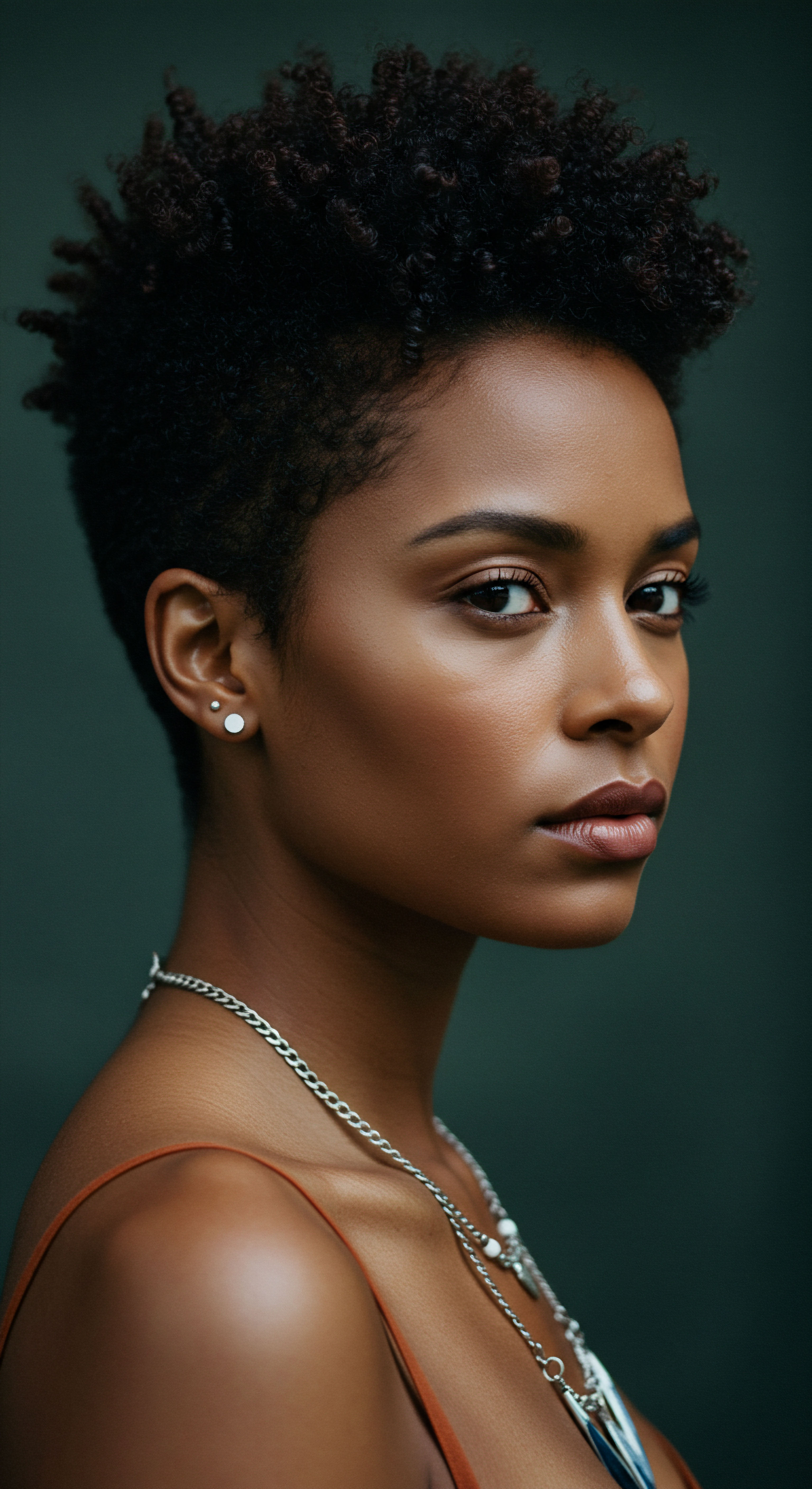
The Bonnet and Headwrap in Historical Context
The humble bonnet, in its various forms, has a surprisingly rich and varied history. From the functional “nightcaps” of medieval Europe, worn for warmth in unheated homes and to keep hair tidy, to the more elaborate boudoir caps of the Victorian era, these head coverings served a dual purpose of practicality and style. Victorian women, with their often long and intricately styled hair, used nightcaps to preserve their coiffures and prevent tangling.
Across the African continent and its diaspora, headwraps carry immense cultural and historical weight. Beyond their aesthetic appeal and social symbolism—denoting marital status, wealth, or spiritual adherence—they have been a fundamental tool for hair protection. During the era of enslavement in the Americas, headwraps were, tragically, sometimes enforced as a means of control and visible distinction.
Yet, Black women transformed these coverings into powerful symbols of resistance, identity, and beauty, often using silk and satin to protect their hair from harsh conditions and maintain their natural oils. This act of defiance and self-care continues to this day, with silk and satin bonnets and scarves remaining essential components of nighttime hair care routines for many Black women.
From European nightcaps to African headwraps, cultural artifacts for sleep protection have historically served practical and symbolic roles.
Consider the meticulousness of the nightly ritual for many, particularly those with textured hair. It is a moment of calm, a deliberate act of self-preservation. Hair might be sectioned, moisturized, and then carefully gathered into a silk or satin bonnet, or wrapped with a scarf. This deliberate process minimizes friction, locks in moisture, and helps maintain the integrity of styles, extending their life and reducing the need for excessive manipulation.
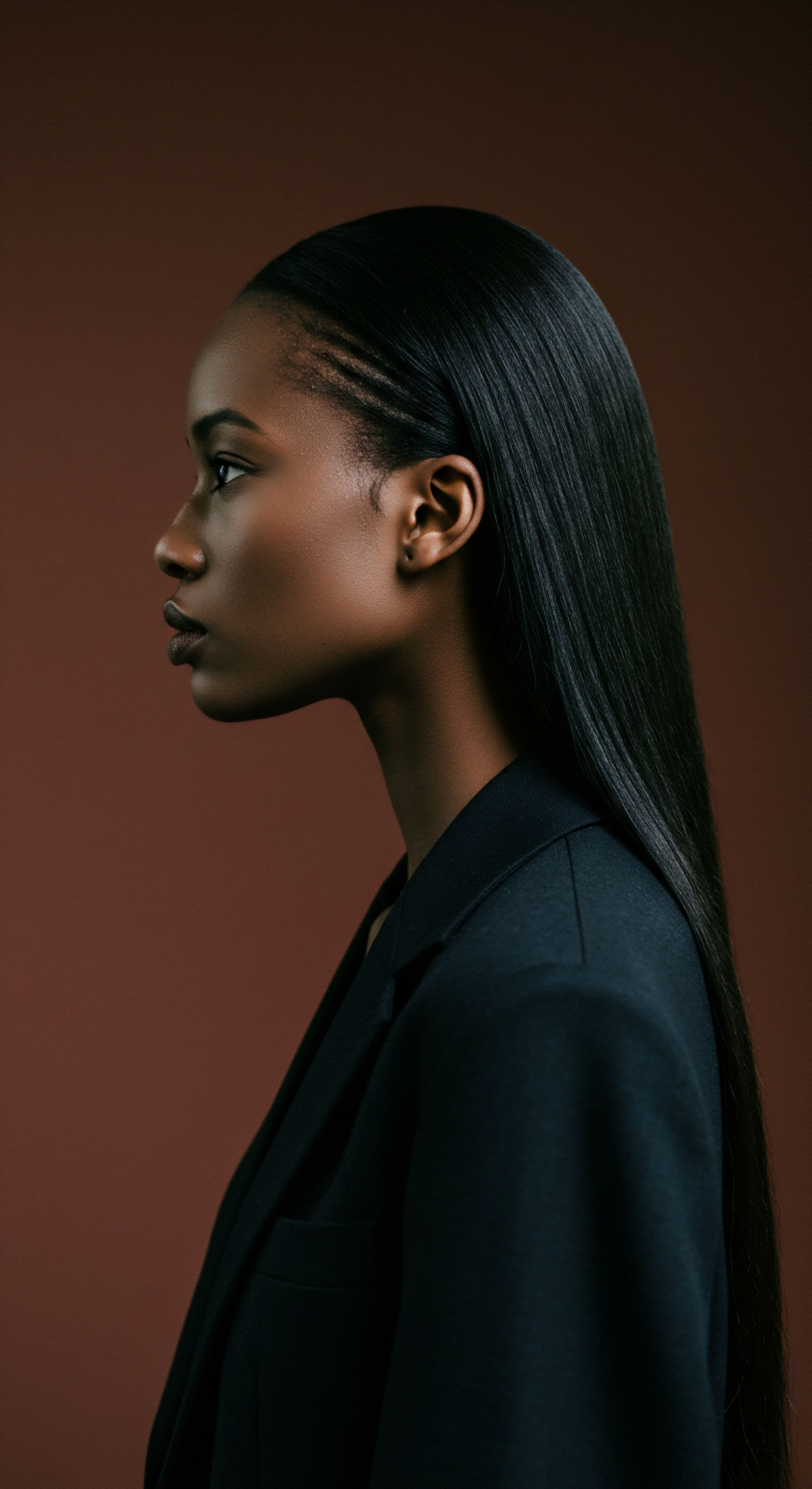
Relay
The journey into understanding cultural artifacts for hair protection during sleep extends beyond their immediate utility; it invites us to contemplate the profound interplay of historical currents, scientific principles, and deep-seated cultural identity. We are not merely observing objects; we are witnessing the tangible expressions of collective resilience and an enduring commitment to hair health, particularly for those with textured hair, where every strand holds a story.
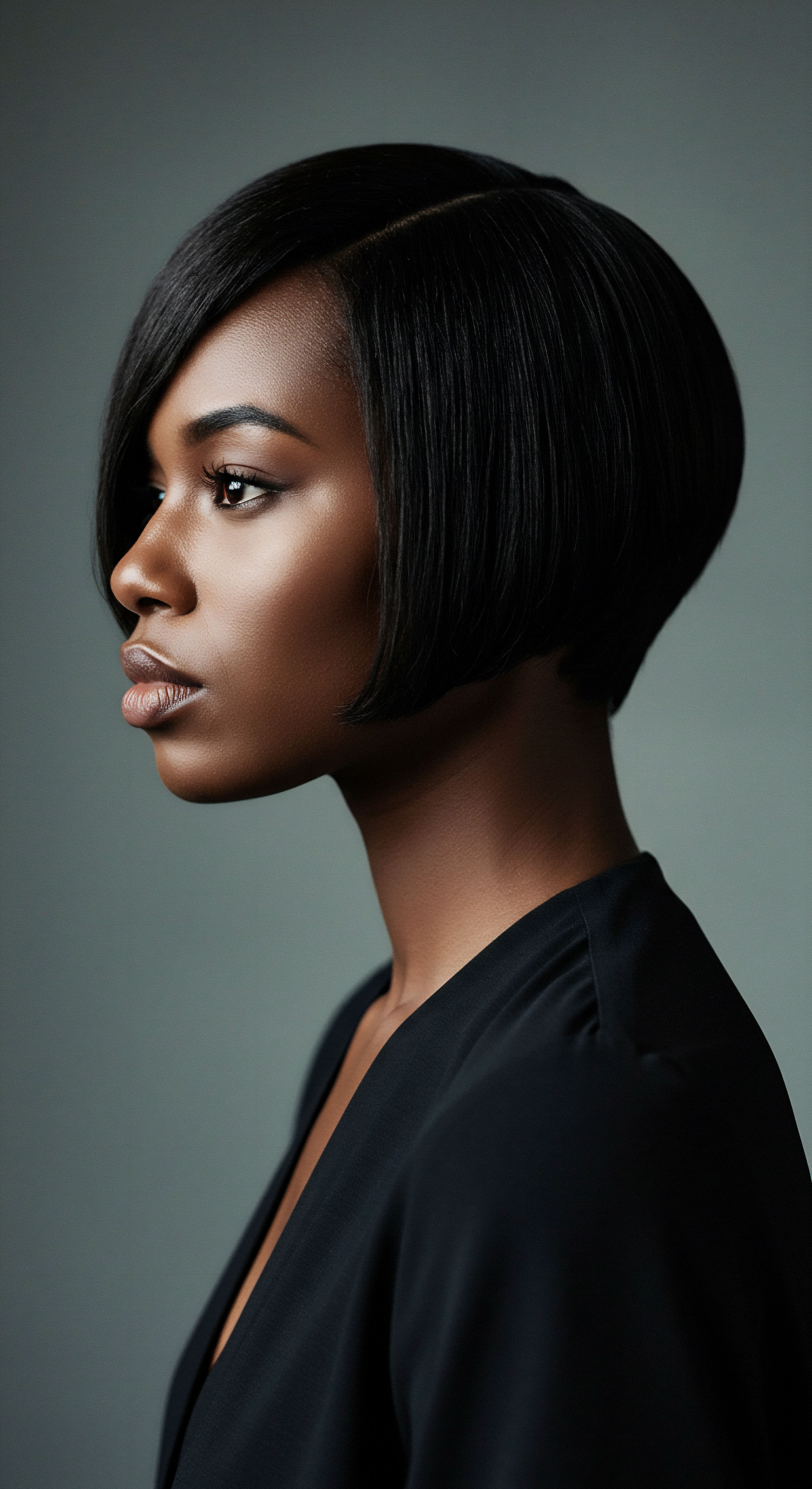
The Science of Sleep and Hair Integrity
The seemingly innocuous act of sleeping can exert considerable stress upon hair. The constant friction between hair strands and bedding materials, especially those with a rough surface like cotton, can lead to cuticle damage. The hair cuticle, a layer of overlapping scales, is the hair’s primary defense against environmental aggressors and moisture loss. When these scales are roughened or lifted by friction, the hair becomes more porous, losing internal moisture and becoming prone to breakage, tangles, and frizz.
A study published in the Journal of Cosmetic Science, while not directly on sleep protection, highlighted the impact of mechanical forces on hair. Researchers found that repeated friction significantly increased the surface damage to hair fibers, particularly in chemically treated hair, leading to a decrease in tensile strength and an increase in breakage points. While this study examined brushing, the principles of mechanical abrasion apply directly to the friction experienced during sleep, underscoring the physical stress endured by unprotected hair. This scientific underpinning validates the intuitive wisdom of cultures that sought to minimize this nightly friction.

How Do Cultural Practices Align with Hair Science?
The historical and cultural practices of protecting hair during sleep align remarkably well with modern scientific understanding of hair biology. The preference for smooth, low-friction materials like silk and satin across diverse traditions is a prime example. These materials reduce the mechanical stress on the hair shaft, preserving the cuticle layer and thus the hair’s internal moisture and structural integrity.
- Reduced Friction ❉ Silk and Satin fabrics possess a smooth surface, allowing hair to glide over them with minimal resistance. This directly counteracts the abrasive forces that lead to cuticle damage and breakage.
- Moisture Retention ❉ Unlike absorbent cotton, silk and satin do not wick away the natural oils and applied moisture from the hair. This is particularly crucial for textured hair, which tends to be drier by nature due to its curl pattern and fewer cuticle layers in some regions of the strand.
- Style Preservation ❉ By containing the hair and minimizing movement, these coverings help maintain the integrity of hairstyles, reducing the need for daily restyling that can also contribute to mechanical damage.

Cultural Expressions of Hair Protection at Night
The artifacts themselves tell stories of adaptation and cultural resilience.

What Diverse Head Coverings Were Used for Nighttime Hair Protection?
Beyond the well-known bonnets and headwraps, various cultures developed their own unique approaches to nighttime hair protection, often blending utility with aesthetic and symbolic meaning.
- The Tignon ❉ In 18th-century Louisiana, the Tignon laws mandated that Afro-Creole women cover their hair. While an oppressive measure, these women transformed the tignon into a defiant fashion statement, adorning them with jewels and ribbons. While primarily a daytime garment, the cultural practice of covering hair likely extended to nighttime for preservation and identity.
- Chinese Hair Covers ❉ Ancient Chinese cultures, valuing long, well-maintained hair, used various head coverings. While specific “sleep caps” are less widely documented than daytime headwear like the Jin (kerchief) or Ze (cylindrical cap), the general practice of tying hair up or covering it to maintain intricate styles suggests a continuum of protection that would extend to night. The use of silk in hair wraps for protection and status was prevalent, suggesting its application in preserving elaborate hairdos, including overnight.
- Indian Hair Ribbons and Braids ❉ In India, the practice of braiding long hair before sleep, often reinforced with ribbons, was a common method to prevent tangles and breakage. This simple yet effective technique demonstrates an understanding of how to minimize mechanical stress on hair during rest.
- European Nightcaps ❉ These were not solely for warmth. By the Victorian and Edwardian eras, silk nightcaps were specifically recommended to keep hair tangle-free and glossy, reflecting a direct concern for hair health during sleep. The shift to satin in the late 19th century was also noted for its gentler effect on hair, allowing it to move freely and reducing the need for morning combing.
From the forced tignon to the protective silk scarf, diverse cultural artifacts for sleep reveal ingenuity in hair preservation.
The cultural significance of these artifacts often transcends their practical function. For many Black women, the act of covering hair at night is a deeply personal ritual, passed down through generations, connecting them to ancestral practices and a legacy of self-care amidst historical adversity. This continuity speaks to the profound connection between hair, identity, and cultural heritage, where protecting one’s hair is also an act of preserving one’s roots.
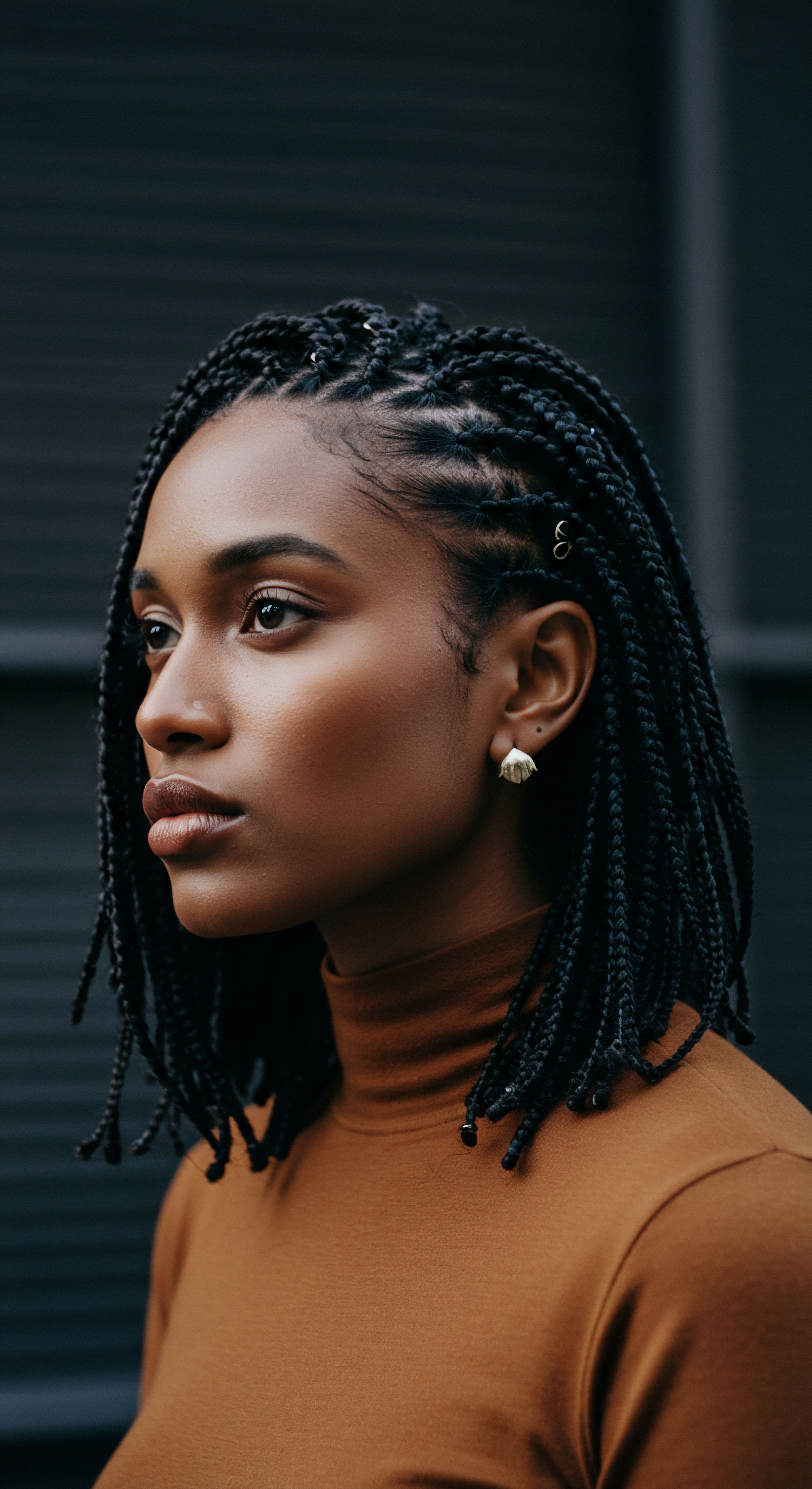
Reflection
As we close this exploration, the quiet resilience of hair care practices across cultures, particularly those dedicated to the stillness of night, continues to whisper its wisdom. These artifacts, whether a simple headwrap, a silken bonnet, or a carefully braided strand, are more than mere objects; they are custodians of history, carriers of cultural meaning, and silent partners in the enduring quest for healthy, vibrant hair. The knowledge passed down, from grandmother to grandchild, from ancient tradition to modern science, reminds us that caring for our hair is a timeless act of self-reverence, a gentle promise kept through the sleeping hours, ensuring that each morning brings not just a new day, but a renewed crown.
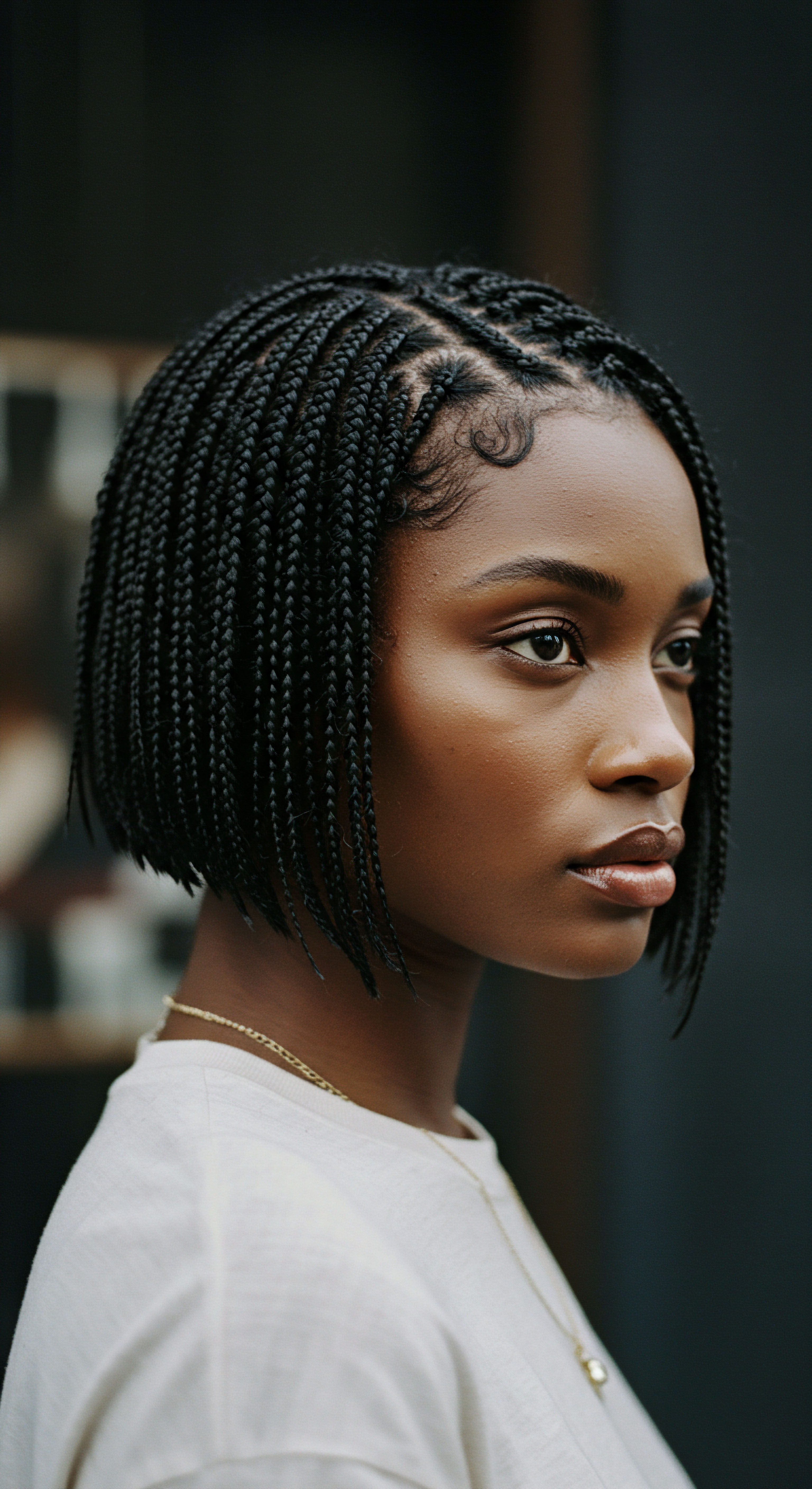
References
- Draelos, Z. D. (2010). Hair Cosmetics ❉ An Overview. Journal of Cosmetic Science, 61(1), 1-14.
- Al-Rawi, K. M. (2009). The History of Hair ❉ Fashion and Adornment through the Ages. University of Texas Press.
- Blum, S. (2004). The Art of African Textiles ❉ Technology, Aesthetics, and History. Yale University Press.
- Corson, R. (2005). Fashions in Hair ❉ The First Five Thousand Years. Peter Owen Publishers.
- Craik, J. (2005). The Face of Fashion ❉ Cultural Studies in Fashion. Routledge.
- Garth, M. (2018). Hair Story ❉ Untangling the Roots of Black Hair in America. St. Martin’s Press.
- Sherrow, V. (2006). Encyclopedia of Hair ❉ A Cultural History. Greenwood Press.
- Stamford, S. (2013). The Head Covering ❉ A Historical Survey of the Head Covering in Christianity. CreateSpace Independent Publishing Platform.